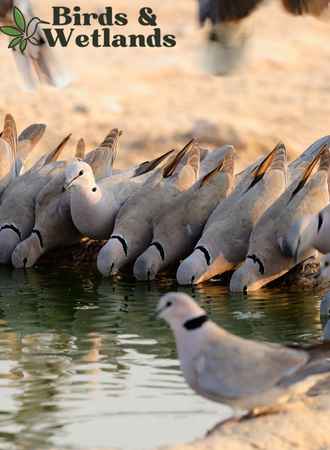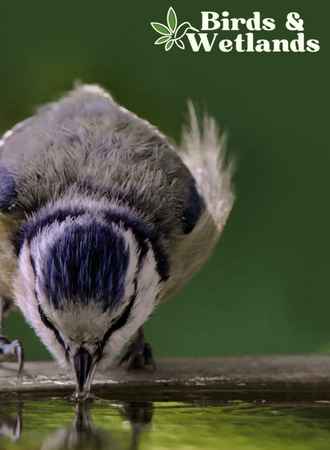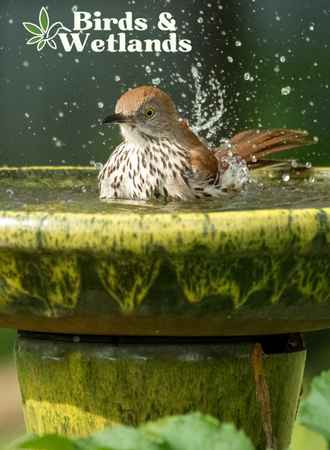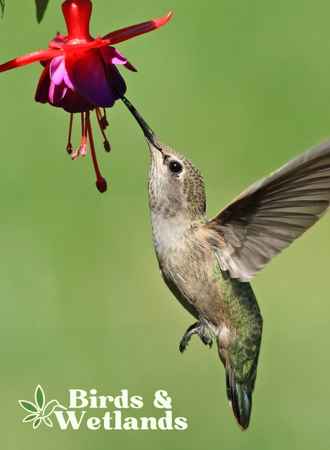North American birds inhabit many habitats, from deserts to forests and everything in between. Regardless of where they live, these birds have adapted to their environment and have found ways to survive. However, one of the most essential elements for their survival is water.
Yes, birds do drink water! Like us, they need to stay hydrated to maintain their health and perform important bodily functions. They also use water to keep their feathers clean. Most wild birds get their water from sources such as streams, lakes, and even dew on plants. They will also drink from bird baths and other sources of standing water.
Whether you are a bird enthusiast or just curious about their behavior, you won’t miss this blog post on bird hydration. We’ll take an in-depth look at what birds drink, how they find water, and the role that water plays in their survival. You may be surprised at what you’ll learn about these feathered friends. So, sit back, relax, and read on to discover more about birds and water.
Key Takeaways on Do Birds Drink Water
Do all birds drink water?
Like all other living beings, birds require water to survive and maintain good health, especially during hot summer months. Water is essential to many of the bird’s physiological processes, such as digestion, healthy metabolism, and excretion. Birds preen to keep their feathers aligned and clean and if they can’t do this, they lose body heat faster than usual.
Birds obtain water from various sources, including food and drinking water. While most birds consume water to meet their hydration needs, not all birds drink water similarly.
The hydration habits of birds vary based on various factors such as species, habitat, and diet. Some birds can obtain sufficient hydration from the moisture in their food, such as fruits, insects, and nectar, while others rely on drinking water. For example, insectivorous birds get most of their hydration from insects.
Some birds consume more water than others which can be attributed to differences in their body size, metabolic rate, and habitat. For instance, seed-eating birds have a dry diet consisting of grains and seeds need to drink more water, especially if they’re exposed to heating elements because they don’t have sweat glands.
In contrast, birds that live in wet environments, such as waterfowl, consume less water as they have access to water sources and obtain moisture from their food.

How do birds drink water?
Many birds have different adaptations to their habitat to find sources of hydration. They can drink from bodies of water, extract water from the atmosphere, and get moisture from their food. These methods ensure that birds stay hydrated and can survive in their environment.
The most common way for birds to drink water is to land on the surface of a body of water and sip it up through their beaks. Some birds, such as ducks, geese, and swans, use their long necks to submerge their entire head and neck while they drink. Other species, such as herons, use their long beaks to reach into the water and scoop up a small amount of water at a time.
Most birds of prey and fruit-eating birds don’t drink water like other birds. They get most of their hydration needs from the moisture from their food.

Where do birds get water in the winter?
Backyard birds require a constant water source to maintain proper hydration and support their vital physiological processes. In the winter or freezing weather, when natural sources of water and food sources such as streams, lakes, and ponds may freeze over, birds must rely on alternative water sources.
One common source of water in the winter is melting snow and dripping icicles. Snow often provides a convenient and accessible water source, especially for ground-feeding birds such as sparrows, juncos, and doves.
However, snow can also be limiting if it is covered with a layer of ice. Birds eat snow but they need to expend precious energy, body heat and calories to bring it to body temperature.
Another source of water in the winter is food. Many bird species feed on fruits, berries, and insects that contain significant amounts of moisture. This can help supplement their water needs, especially for species primarily insectivorous, such as woodpeckers, warblers, and vireos.
How to provide birds water in winter?
Providing water for birds through birdbaths, garden ponds and other water features during the winter months is an important aspect of bird care, as it can help them survive harsh weather conditions and provide a vital source of hydration.
Here are some best practices to follow when providing water for birds during the winter:
Use a heated birdbath.
One of the biggest challenges of providing water for birds during the winter is keeping the water from freezing. To solve this problem, you can use heated birdbaths, which will keep the water in the heated birdbath at a constant temperature, making it available for the birds even on the coldest days.
However, keep in mind that a heated bird bath needs to be setup in a certain way. There have been documented records of starlings dropping from the sky and wet mourning dove tails freezing to tree branches after using a bird bath.
When birds bathe in a birdbath in a frigid day, their feathers may get iced up. Place it in a sunny area to avoid freezing.
You can help birds discover your winter birdbath or unbreakable shallow bowl by putting it out at the same schedule each day.
To avoid shock, connect your heated bird bath to a ground-fault interrupted circuit.
Hugeneroy Heated Bird Bath
The Perfect Winter Helper
The hugeneroy Heated Bird Bath is a much-needed winter survival aid for our feathered friends, offering thermostatically controlled heat, durable construction, and energy-efficient operation.
- Winter-Friendly: Designed specifically for colder seasons, this bird bath maintains water just above freezing point, providing a constant source of liquid water for birds, even in heavy snowfall.
- Energy Efficient: With a built-in 120V 60W high-quality heating element, the birdbath heats up only when necessary, ensuring minimum energy consumption.
- Superior Material: Unlike ceramic or concrete alternatives that may crack under heat, this bird bath is made from quality, BPA-free plastic that withstands heating without generating harmful substances.
- Safety First: Featuring a thermostatically controlled operation, the bird bath automatically cuts off electricity when the water is dry, ensuring safety for the birds and other backyard animals.
- Attractive to Birds: The off-white bird bath blends in with the natural environment, attracting more birds to your backyard. It can also be adorned with colourful stones to make birds feel more secure and enhance your garden aesthetics.
Use a heated bird waterer.
Another option is to use a heated bird waterer with immersion-style water heater, which can be filled with water and placed in a sheltered location, away from the wind and direct sunlight. These heated bird waterers have a built-in heating element that keeps the water from freezing, ensuring that the garden birds have access to water throughout the winter.
Insulate the bird bath.
If you don’t have access to a bird bath heater or heated bird waterer, you can insulate the bird bath to help keep the water from freezing. You can use materials such as Styrofoam, blankets, or tarps to wrap around the bird bath, trapping the warmth from the sun and preventing the water from freezing. Avoid chemicals such as glycerin as anti freeze because if birds ingest it, it can elevate their blood sugar levels.
Alternatively, place a light bulb in a flower pot and a small water basin on top of the flower pot.
Clean your birdbath regularly.
Birds are attracted to clean liquid water, so it is important to keep the bird bath clean and free of debris and bird droppings. Regular cleaning and refilling will also help prevent the water from freezing.
Place bird feeders near the water.
Placing bird feeders near the bird bath will encourage birds to visit the area more frequently, giving them a chance to eat food and consume water.
You can also install a few sticks or at round the feeders and birdbaths to let birds perch. Putting stones and other objects can also provide a nice perch for these birds.
If your bird bath freezes, you can use hot water liquid to melt the ice. Or you can bring it inside as ice forms around your frozen birdbath or water dish.

How much water do birds drink?
The amount of water a bird needs depends on several factors, including its size, activity level, and habitat. Smaller birds need less water than larger birds, and those living in dry climates need more than those living in wetter areas. More active birds also need more water, burning more energy and therefore need to replenish their supply more often.
Generally, most birds need between 1-2 ounces of water daily for every pound of body weight. This means that a hummingbird, which typically weighs no more than 0.17 ounces, needs only a few water droplets each day. A larger bird, like an eagle, could require up to 8 ounces of water per day.

What are other hydration source for birds besides water?
It’s important to note, however, that while these sources can contribute to a bird’s hydration, they are generally not enough to completely replace the need for fresh, clean water.




